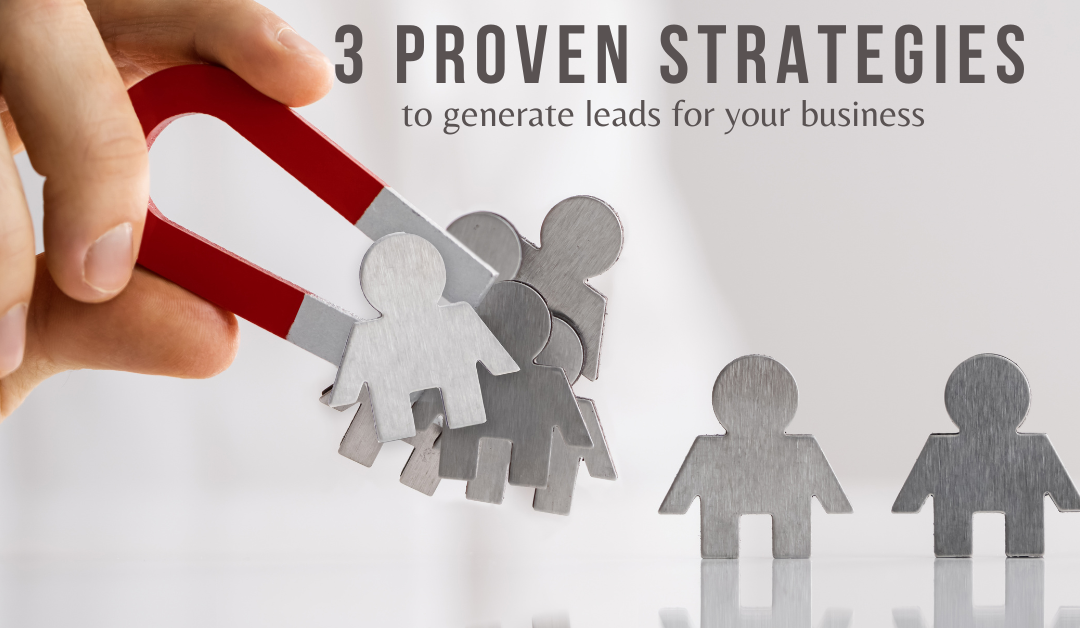
Nov 8, 2024 | ads, blog, Goals, leads, promotion, social
As an entrepreneur in the online coaching or course creation space, generating a steady flow of quality leads is crucial for the success and growth of your business. Without a consistent pipeline of potential customers, it can be incredibly challenging to convert sales and scale your impact.
Fortunately, there are several effective strategies you can implement to attract the right kind of leads – people who are genuinely interested in and aligned with your offering. In this post, I’ll share three proven techniques that have helped many online coaches and course creators build thriving, sustainable businesses.
Tip 1: Leverage Strategic Partnerships and Collaborations
One of the most powerful ways to generate leads is by tapping into the audiences of complementary businesses or industry influencers through strategic partnerships and collaborations. This could take many forms, such as:
- Guest posting on relevant blogs or podcasts
- Appearing as an expert guest on others’ webinars or livestreams
- Hosting a joint venture workshop or masterclass
- Participating in virtual summits or challenges
- Exchanging promotional content on social media
The key is to identify potential partners whose audiences overlap with your ideal customers. This could be other coaches, course creators, bloggers, YouTubers, or anyone else who serves a similar target market.
When done right, these collaborations allow you to access new pools of qualified prospects who are already primed and eager to learn from someone in your industry. It’s a win-win, as you get to expand your reach while providing value to your partner’s audience.
To make the most of these opportunities, focus on building genuine relationships first. Get to know the people you want to work with, understand their businesses and audiences, and look for authentic ways you can help each other out. Avoid the temptation to hard sell; instead, be genuinely useful and contribute to their success.
Additionally, be selective about the partnerships you pursue. Quality is more important than quantity – it’s better to have a small number of highly relevant, high-quality collaborations than to spread yourself thin across too many channels.
Tip 2: Create a Lead Generation Funnel with Gated Content
Another effective strategy for attracting qualified leads is to build out a content marketing funnel, which allows you to capture contact information in exchange for valuable, gated digital content. This could include:
- In-depth guides or whitepapers
- Exclusive webinars or workshops
- Assessment tools or quizzes
- Free email courses or challenges
The key is to create content that is highly relevant and useful for your target audience, addressing their specific pain points, questions, or goals. This establishes you as an authoritative expert while simultaneously generating warm leads who have explicitly shown interest in your offerings.
To implement this strategy, start by mapping out the customer journey and identifying the most logical entry points and conversion opportunities. What are the key questions, concerns, or aspirations your ideal clients have at different stages? How can you create content that guides them towards your products or services?
Once you have a content plan in place, build out a lead capture funnel using tools like email marketing platforms, landing page builders, or all-in-one sales funnels. Ensure that your opt-in forms, calls-to-action, and digital content assets are visually appealing, user-friendly, and optimized for conversions.
It’s also important to nurture these leads through ongoing email marketing, social media engagement, or other touchpoints. Don’t just collect their information and then go silent – continue providing value, building trust, and guiding them towards your paid offerings.
Tip 3: Leverage Social Media Advertising
In addition to organic content and partnership strategies, savvy online coaches and course creators can also utilize paid social media advertising to reach and convert new leads. Platforms like Facebook, Instagram, LinkedIn, and even TikTok can be powerful lead generation tools when leveraged strategically.
The key is to get laser-focused on your target audience and create highly-relevant ad creative and messaging. Take the time to thoroughly research your ideal customer’s demographics, interests, behaviors, challenges, and goals. Use this intel to build out detailed buyer personas and custom audience segments.
From there, you can craft compelling ad copy, eye-catching visuals, and clear calls-to-action that speak directly to the pain points and desires of your target market. Consider promoting your gated content offers, webinar registrations, or other lead magnets to drive opt-ins and build your email list.
Don’t be afraid to experiment with different ad formats, placements, and targeting criteria to see what resonates best. Social media algorithms are constantly evolving, so it’s important to remain agile and data-driven in your approach. Closely monitor your campaign performance and adjust your strategy accordingly.
It’s also worth exploring retargeting ads to re-engage users who have already interacted with your brand or content. This can be an incredibly effective way to nurture leads and guide them towards a sale.
While social media advertising does require an upfront investment, it can be a game-changing lead generation channel when executed thoughtfully. Just be sure to track your key metrics, continuously optimize your approach, and tie your ad spend directly back to tangible business outcomes.
I can help you with getting more leads for your business. Please join me for my new Masterclass on Dec. 3rd to discover:
The Only 4 Ads You Need To Grow Your List by 100 – 400 FAST
Generating a consistent flow of high-quality leads is essential for the long-term success of any online coaching or course creation business. By leveraging strategic partnerships, creating lead-capture content funnels, and utilizing social media advertising, you can build a powerful, multi-faceted lead generation engine that supports your growth objectives.
Remember, lead generation is an ongoing process that requires patience, experimentation, and a data-driven mindset. Stay focused on your ideal customer, provide tremendous value, and continuously refine your approach. With the right strategies in place, you can fill your pipeline with qualified prospects and position your business for sustained success.
Carlene helps entrepreneurs get more traffic, engagement and leads by creating the best return on ad spend campaigns. She creates campaigns with whatever marketing budget her clients can work with for their business growth & expansion. Now is the perfect time to use strategic ads for growth, leads and achieve the income you deserve.
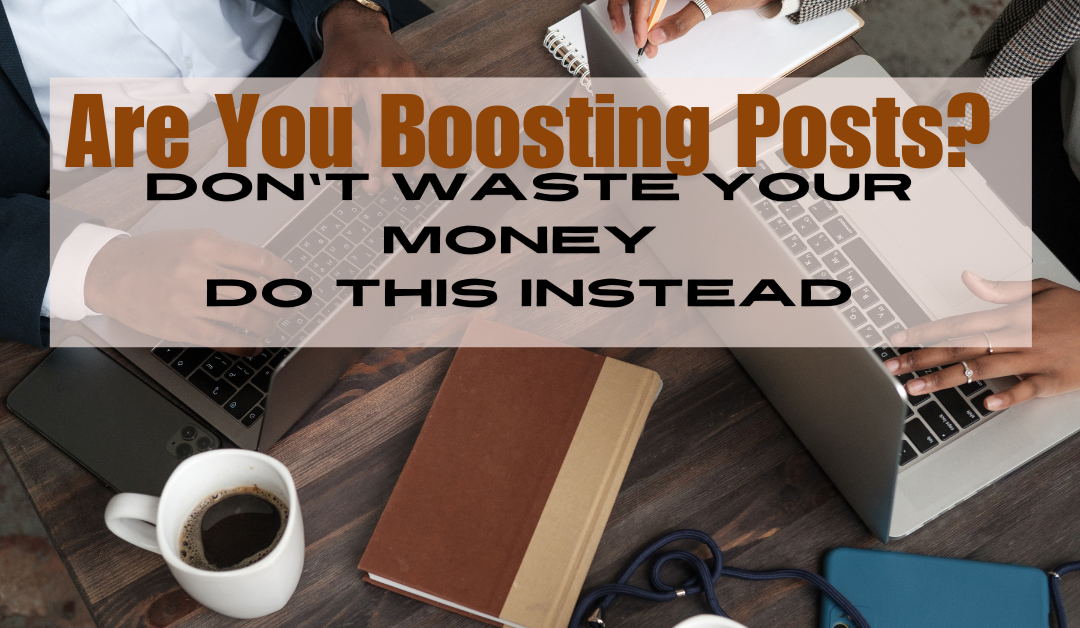
Oct 9, 2024 | ads, blog, Goals
Don’t Ever Boost Posts on Facebook or Instagram – Do This Instead
Many businesses, especially solopreneurs, believe boosting a post on Facebook or Instagram is a quick and easy way to gain visibility. While boosting might offer short-term engagement, it lacks the precision and efficiency of other advertising methods. Instead of relying on this broad, inefficient strategy, there are more advanced techniques that provide better control, insights, and results. Here’s what you should be doing instead to maximize your ad spend and achieve better outcomes:
- Create Custom Audiences
Boosting posts throws your content at everyone, but not all of them are relevant to your business. A more strategic approach is to create custom audiences based on highly relevant data. By building audiences using your email list, website visitors, and lookalike audiences, you target people who have already expressed interest in your brand or resemble your ideal customer. For instance, someone who has visited your website or added something to their cart is much more likely to convert than a random user scrolling by. Custom audiences help you reach those warmer leads, leading to better results and more efficient use of your budget.
- Use Facebook Ads Manager
Many business owners shy away from Facebook Ads Manager because it looks complex. However, it’s actually more straightforward than it seems. Once you get past the initial overwhelm, you’ll realize that the platform mainly has three sections to focus on: the Campaign, Ad Set, and Ads levels. These sections allow you to set your objectives, define your audience, and choose your creatives, giving you far more control than simply boosting posts. In Ads Manager, you can optimize your campaigns based on your specific goals, be it driving traffic, generating leads, or making conversions. When you compare the detailed targeting and optimization features of Ads Manager with the limited reach of boosted posts, it’s clear which tool offers more value.
- A/B Split Test Like Crazy
Don’t rely on a single ad to carry the weight of your campaign. Successful marketers know the power of A/B testing, which involves creating multiple versions of your ads with different elements like copy, images, and calls-to-action (CTAs). This allows Facebook’s algorithm to do the heavy lifting by showing you which version performs better. By testing different variations, you get real data on what resonates most with your audience. Small changes in wording or design can make a huge difference, and the insights you gain will help you fine-tune future campaigns.
- Retarget Like a Boss
Retargeting is where the magic happens. Retargeting campaigns target people who have already interacted with your content, visited your website, or are on your email list but haven’t yet made a purchase. These people are much closer to buying because they’re already familiar with your brand. Setting up retargeting ads is like giving them a gentle nudge toward the checkout line. By reminding them of your products or services, you’re significantly increasing the likelihood of conversion, as these users are already interested in what you offer.
- Focus on Objectives
Boosting a post typically results in increased likes, comments, and shares, but these aren’t always the actions that drive business growth. Instead, when creating campaigns in Ads Manager, focus on specific objectives like conversions, lead generation, or video views. Facebook’s algorithm is smart enough to find the right people for your desired action. By selecting the correct objective for your campaign, you’re essentially telling the algorithm what you want, and it will optimize your ad delivery to help you achieve that goal. Whether you’re looking for email sign-ups, purchases, or engagement, having a clear objective will drive more meaningful results.
Boosting posts may seem like an easy win, and convenient but it’s often a waste of your budget. To truly maximize your Facebook and Instagram advertising efforts, it’s essential to use more advanced strategies like creating custom audiences, utilizing Ads Manager, A/B testing, retargeting, and focusing on specific campaign objectives. These techniques will help you reach the right audience with the right message, ultimately driving better results for your business. By taking the time to master these tools, you’ll see a higher return on your ad spend and build stronger relationships with your customers.
Get you own copy of my Facebook Ads For Sales Method today…>>>> INSTANT DOWNLOAD.
Carlene helps entrepreneurs get more traffic, engagement and leads by creating the best return on ad spend campaigns. She creates campaigns with whatever marketing budget her clients can work with for their business growth & expansion. Now is the perfect time to use strategic ads for growth, leads and achieve the income you deserve.
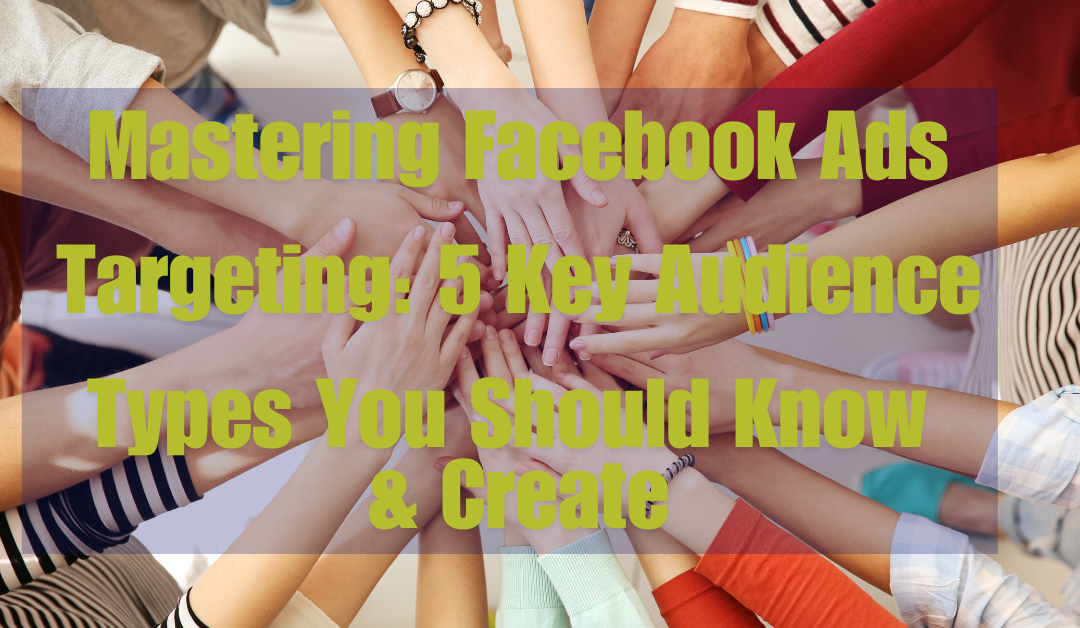
Sep 26, 2024 | ads, Audiences, blog, promotion
Facebook Ads have proven to be one of the most effective tools for business owners and entrepreneurs looking to reach new customers and grow their brands. But the success of your Facebook ads relies heavily on targeting the right audience. The beauty of Facebook’s advertising platform lies in its audience targeting options, which allow you to tailor your message to different types of people based on interests, behavior, and past interactions with your business.
In this guide, we’ll dive into five key audience types that you can use to boost the success of your Facebook ad campaigns: broad audiences, targeted audiences, custom email list audiences, engagement audiences, and buyer audiences. Understanding and utilizing these different audience types is essential for running successful Facebook ads that deliver results.
1. Broad Audience
Let’s start with the broad audience—a category that many advertisers may be skeptical about, but which can actually yield great results when used correctly. A broad audience, as the name suggests, targets a wide range of people with little to no specific interest or demographic restrictions. Think of this as a “top-of-funnel” strategy where you’re casting a wide net.
Why Use Broad Audiences?
A broad audience is great when you’re looking to increase awareness of your brand and reach new potential customers who may not have interacted with your business before. This approach works particularly well for businesses with wide-reaching products or services, such as an online store with various offerings. It’s also ideal for testing your ad creative and seeing which types of messages resonate with a larger, more diverse group.
With Facebook’s ever-improving algorithms, using a broad audience allows the platform to learn who’s engaging with your ad and optimize accordingly. Essentially, Facebook’s machine learning can help refine your audience as your campaign progresses, even if you start with a broad set of people.
When to Use:
- Brand Awareness: When you’re introducing your brand or a new product to a large number of people.
- Testing New Campaigns: Great for testing out different ad creatives, headlines, and offers to see which performs best.
- Lower Costs: Since broad audiences don’t rely on detailed targeting, ad costs may be lower compared to niche campaigns.
2. Targeted Audience
Next, let’s look at the targeted audience. This is the most commonly used audience type for businesses looking to zero in on specific groups of people. With targeted audiences, you can drill down based on demographics, interests, behaviors, and location.
For instance, if you run a yoga studio in Phoenix, you can target people in your local area who are interested in fitness, wellness, and yoga. Facebook allows for an incredible level of specificity when it comes to targeting, which helps ensure that your ad is only seen by people who are likely to be interested in what you’re offering.
Why Use Targeted Audiences?
Targeted audiences allow you to get laser-focused with your ads. By narrowing down who sees your ad, you’re increasing the likelihood of it being relevant to them, which improves both click-through rates and conversions. You’ll also avoid wasting ad spend on people who aren’t in your target market.
You can use factors like:
- Location: To target local customers or specific geographical areas.
- Age and Gender: To focus on your ideal demographic.
- Interests: Based on what people are into, like cooking, traveling, or entrepreneurship.
- Behavior: Targeting based on purchase behavior, device usage, or activity on the platform.
When to Use:
- Niche Products or Services: When your offering appeals to a specific group of people with defined characteristics or interests.
- Higher Conversion Rates: Targeted ads are great for conversion-driven campaigns because they’re more likely to attract people ready to take action.
- Budget Management: By narrowing down your audience, you reduce wasted ad spend, making it a great option for businesses with a tighter ad budget.
3. Custom Email List Audience
A custom email list audience allows you to target people who’ve already shown interest in your business. These are users who’ve signed up for your newsletter, made a purchase, or filled out a form on your website. By uploading a list of email addresses to Facebook, the platform can match those addresses with users and show them your ads.
Why Use Custom Email List Audiences?
People on your email list are already familiar with your brand, which makes this audience highly valuable for both retargeting and upselling. These are warm leads who’ve expressed interest in your business, and your goal is to move them further down the sales funnel.
For example, you can run an ad campaign specifically targeting people who haven’t made a purchase yet, offering them a special discount or promotion. You could also upsell existing customers by showing them complementary products based on their previous purchases.
When to Use:
- Retargeting: When you want to re-engage users who have interacted with your brand but haven’t yet converted.
- Upselling/Cross-Selling: To show ads to customers promoting new products or services based on their previous purchases.
- Increasing Customer Loyalty: Custom email audiences can be used to nurture your current customer base, providing them with exclusive offers, loyalty rewards, or early access to new products.
4. Engagement Audience
An engagement audience consists of people who have engaged with your content on Facebook or Instagram but haven’t taken any further action yet. These engagements can include likes, comments, shares, video views, or visits to your Facebook page.
This audience type is particularly useful for retargeting purposes. People who have engaged with your content are already interested in your brand or message, but may need a little more incentive to convert.
Why Use Engagement Audiences?
Engagement audiences are excellent for nurturing warm leads. If someone watched 50% of a video ad you ran or interacted with a recent post, there’s a good chance they’re interested in what you have to offer. By targeting this group, you can move them from the consideration phase to the conversion phase with the right offer.
For instance, you can retarget users who watched a significant portion of your product video with an ad offering a special deal or free shipping. Since they’re already familiar with your brand, they’re more likely to click on the ad and complete a purchase.
When to Use:
- Video Retargeting: Run ads to users who’ve watched a certain percentage of your videos.
- Post Engagement: Target people who liked, commented, or shared your Facebook or Instagram posts.
- Page Visitors: Show ads to people who visited your Facebook page but haven’t yet converted.
5. Buyer Audience
A buyer audience is made up of people who have already purchased something from your business. These are your loyal customers, and they represent a highly valuable segment for repeat sales, cross-selling, and brand advocacy. Facebook allows you to create an audience of your buyers based on past purchase behavior.
Why Use Buyer Audiences?
A buyer audience is gold for any business because the cost of acquiring new customers is higher than retaining existing ones. People who have already purchased from you are far more likely to buy again if they had a positive experience. This audience is perfect for running ads promoting complementary products, subscription services, or even loyalty rewards programs.
For example, if someone purchased a coffee maker from your online store, you can show them an ad for coffee beans or accessories. The more personalized the follow-up, the better the chance of a repeat purchase.
When to Use:
- Repeat Purchases: Encourage customers to return by showcasing new products or offering a limited-time discount.
- Cross-Selling: Promote complementary products based on previous purchases.
- Customer Loyalty: Engage your most loyal customers by offering exclusive perks, early access to sales, or loyalty rewards.
The Power of Facebook Ads Targeting
Facebook Ads offer a wealth of audience targeting options that can dramatically improve the success of your campaigns. By understanding and utilizing these five audience types—broad audiences, targeted audiences, custom email list audiences, engagement audiences, and buyer audiences—you can fine-tune your approach and reach the right people with the right message at the right time.
Each audience type serves a unique purpose in your marketing strategy, and the best campaigns often use a mix of all five to nurture prospects through the sales funnel, from awareness to conversion and repeat business. So whether you’re just starting with Facebook ads or looking to optimize your current campaigns, mastering audience targeting is key to achieving your business goals.
Work with me to come up with your ideal audiences for your ad goals and budget. >> bit.ly/5WeekAds.
Carlene helps entrepreneurs get more traffic, engagement and leads by creating the best return on ad spend campaigns. She creates campaigns with whatever marketing budget her clients can work with for their business growth & expansion. Now is the perfect time to use strategic ads for growth, leads and achieve the income you deserve.

Jul 25, 2024 | ads, blog, promotion, social
Say you are lauching for Black Friday— Here’s your timeline and plan
Launching an offer during Black Friday requires strategic planning and preparation to maximize the impact and success of your campaign. Here’s a comprehensive timeline and checklist to help you prepare:
3-4 Months Before Black Friday (August-September)
1. Research and Planning
- Market Analysis: Understand current market trends, customer preferences, and competitor strategies for Black Friday.
- Goal Setting: Define clear objectives for your Black Friday campaign (e.g., sales targets, new customer acquisition, brand awareness).
- Offer Strategy: Decide on the offers you’ll provide (e.g., discounts, bundles, limited-time offers) and outline the key selling points.
2. Build Your Campaign
- Campaign Concept: Develop the creative concept and messaging for your campaign. Ensure it aligns with your brand and resonates with your target audience.
- Content Creation: Begin creating promotional content, including graphics, videos, blog posts, and social media updates.
3. Website and Landing Pages
- Optimize Website: Ensure your website is mobile-friendly, fast-loading, and easy to navigate. Black Friday will bring a spike in traffic, so make sure your site can handle it.
- Landing Pages: Create dedicated landing pages for your Black Friday deals. These should be persuasive, clear, and include strong calls-to-action.
2 Months Before Black Friday (October)
1. Email Marketing Preparation
- Email List Building: Start building and segmenting your email list. Consider offering a lead magnet to encourage sign-ups.
- Email Campaign: Plan a series of emails to build anticipation for your Black Friday offers. This can include teasers, countdowns, and sneak peeks.
2. Social Media Strategy
- Content Calendar: Create a social media content calendar to ensure consistent posting leading up to Black Friday.
- Engagement: Increase engagement on your social media channels. Host Q&A sessions, polls, and interactive content to build excitement.
3. Ad Campaigns
- Ad Creative: Develop ad creatives for Facebook and Instagram, focusing on eye-catching visuals and compelling copy.
- Budget Allocation: Determine your budget for paid ads and decide how it will be allocated across different platforms and ad sets.
1 Month Before Black Friday (November)
1. Finalize Offers
- Offers and Discounts: Finalize the specific deals you’ll offer. Ensure they are attractive and competitive.
- Stock and Inventory: Check your inventory levels and ensure you have enough stock to meet the expected demand.
2. Launch Pre-Sale Campaigns
- Early Access: Consider offering early access to your deals for loyal customers or email subscribers.
- Teasers: Use teasers on social media and email to build anticipation. Highlight the benefits of your upcoming offers.
3. Test Everything
- Website and Checkout: Test your website’s performance, especially the checkout process. Ensure everything works smoothly.
- Ads: Run test ads to gauge performance and make any necessary adjustments.
2 Weeks Before Black Friday
1. Final Adjustments
- Refine Content: Review and refine all your promotional content, including emails, social media posts, and ads.
- Backup Plan: Have a contingency plan in place in case of unexpected issues (e.g., website crashes, stock shortages).
2. Boost Engagement
- Countdown: Start a countdown on social media and through email marketing.
- Influencer Partnerships: Collaborate with influencers to amplify your reach and generate buzz.
1 Week Before Black Friday
1. Intensify Marketing Efforts
- Daily Updates: Provide daily updates on social media and via email to keep your audience engaged.
- Reminder Emails: Send reminder emails to your subscribers about the upcoming deals.
2. Customer Support
- Support Team: Ensure your customer support team is ready to handle increased inquiries.
- FAQs: Update your FAQ section to address common questions about Black Friday deals and shipping.
Black Friday Week
1. Launch Offers
- Go Live: Launch your offers at the scheduled time. Ensure all systems are ready and monitored.
- Live Updates: Provide live updates on social media about the deals and any special promotions.
2. Monitor and Adjust
- Performance Tracking: Monitor the performance of your ads, website, and overall sales.
- Real-Time Adjustments: Be prepared to make real-time adjustments to your campaigns based on performance data.
3. Engage with Customers
- Social Media Interaction: Engage with customers on social media. Answer questions, respond to comments, and share user-generated content.
- Customer Support: Ensure prompt and helpful customer support throughout the sale.
Post-Black Friday
1. Follow-Up
- Thank You Emails: Send thank-you emails to customers who made a purchase.
- Feedback Collection: Collect feedback from customers to understand their experience and identify areas for improvement.
2. Data Analysis
- Sales Analysis: Analyze your sales data to evaluate the success of your campaign.
- Insights: Use the insights gained to refine future campaigns.
3. Extended Offers
- Cyber Monday: Plan for Cyber Monday deals to keep the momentum going.
- Post-Sale Offers: Consider offering post-Black Friday deals to capture additional sales.
Key Benefits of Thorough Preparation
- Maximized Sales: Well-planned campaigns are more likely to achieve higher sales targets.
- Customer Engagement: Building anticipation and engaging with your audience increases loyalty and brand affinity.
- Reduced Stress: Having a clear plan and timeline reduces last-minute stress and allows for smoother execution.
- Competitive Edge: A strategic approach helps you stand out from competitors and attract more customers.
By following this timeline and checklist, you can ensure that your Black Friday offer launch is well-prepared, strategically executed, and ultimately successful.
If you want to learn how to set up successful FB and IG ad campaigns check out my 5 week one -on-one training bit.ly/5WeekAds
Carlene helps entrepreneurs get more traffic, engagement and leads by creating the best return on ad spend campaigns. She creates campaigns with whatever marketing budget her clients can work with for their business growth & expansion. Now is the perfect time to use strategic ads for growth, leads and achieve the income you deserve.
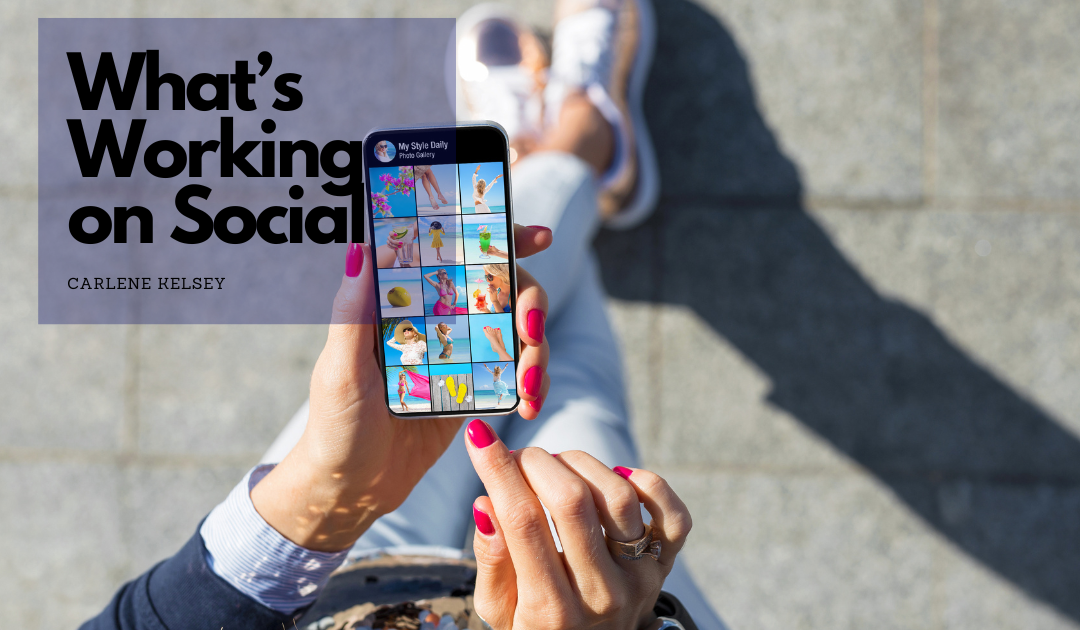
May 18, 2024 | blog, social
Social Media Tips To Be Aware Of In 2024
In the ever-evolving landscape of social media, staying ahead of the curve is crucial for social media managers and Facebook ad strategists. As we navigate through 2024, several key trends and strategies are emerging as game-changers for driving engagement and growth. Here’s a comprehensive look at what’s working this year.
1. Authentic and Relatable Content
The Rise of Authenticity
In 2024, authenticity continues to reign supreme. Users are increasingly drawn to content that feels genuine and relatable. Perfectly polished posts are giving way to more authentic, behind-the-scenes looks at brands and individuals. Whether it’s through candid photos, unfiltered stories, or honest conversations, showing the human side of a brand fosters deeper connections with audiences.
Relatability and Inclusivity
Relatable content, which reflects the diverse experiences and backgrounds of audiences, is crucial. Brands that embrace inclusivity in their messaging and representation are seeing higher engagement rates. By showcasing a wide range of voices and perspectives, brands can build a more loyal and engaged following.
2. Short-Form Video Content
Dominance of TikTok and Reels
Short-form video content is exploding in popularity, with platforms like TikTok and Instagram Reels leading the charge. These formats are perfect for capturing the fleeting attention spans of social media users. In 2024, creating engaging, bite-sized videos is essential for growth.
Tips for Success
- Be Concise: Keep videos short and to the point.
- Hook Early: Grab attention within the first few seconds.
- Use Trends: Capitalize on trending sounds and challenges.
- Engage Visually: Utilize eye-catching visuals and captions.
3. Community Building
Fostering a Sense of Belonging
Building a strong online community is more important than ever. Platforms like Facebook Groups and LinkedIn communities offer a space for users to connect over shared interests and values. These communities provide a sense of belonging and a platform for meaningful interactions.
Strategies for Building Community
- Engage Regularly: Post consistently and engage with members’ content.
- Provide Value: Share valuable resources, insights, and exclusive content.
- Encourage Interaction: Prompt discussions and solicit feedback from the community.
4. Social Commerce
Seamless Shopping Experiences
Social commerce is revolutionizing the way users shop online. Platforms like Instagram and Facebook are integrating shopping features directly into their interfaces, allowing users to discover and purchase products without leaving the app. This seamless shopping experience is driving significant growth for businesses.
Leveraging Social Commerce
- Product Tags: Use product tags in posts and stories to highlight products.
- Shoppable Posts: Create posts that link directly to product pages.
- Live Shopping: Host live shopping events to showcase products in real-time.
5. Influencer Partnerships
The Power of Micro-Influencers
Influencer marketing continues to be a powerful tool for engagement and growth. In 2024, the focus is shifting towards micro-influencers—those with smaller, but highly engaged, followings. Micro-influencers often have a more personal connection with their audience, leading to higher trust and engagement.
Best Practices for Influencer Collaborations
- Align Values: Partner with influencers whose values align with your brand.
- Authentic Content: Encourage influencers to create authentic, relatable content.
- Long-Term Partnerships: Build long-term relationships for consistent brand promotion.
6. Interactive Content
Boosting Engagement with Interactivity
Interactive content is proving to be a major driver of engagement. Polls, quizzes, and interactive stories invite users to participate, creating a more engaging and dynamic experience. This type of content not only boosts engagement but also provides valuable insights into audience preferences and behaviors.
Implementing Interactive Content
- Instagram Stories: Use polls, quizzes, and question stickers in Instagram Stories.
- Interactive Posts: Create posts that prompt users to comment or share their opinions.
- Live Q&A: Host live Q&A sessions to interact directly with your audience.
7. Data-Driven Strategies
Harnessing Analytics
In 2024, leveraging data and analytics is essential for optimizing social media strategies. By analyzing performance metrics, social media managers can gain insights into what’s working and what isn’t, allowing for more informed decision-making.
Key Metrics to Track
- Engagement Rate: Measure likes, comments, shares, and saves.
- Reach and Impressions: Track how many users are seeing your content.
- Conversion Rate: Monitor how many users are taking desired actions.
- Audience Demographics: Understand the demographics of your audience to tailor content.
8. Sustainability and Social Responsibility
Values-Driven Engagement
Consumers are increasingly looking to support brands that align with their values, particularly around sustainability and social responsibility. Brands that are transparent about their efforts to make a positive impact are resonating more with audiences.
Communicating Your Efforts
- Transparency: Be open about your brand’s values and initiatives.
- Storytelling: Share stories of how your brand is making a difference.
- Engagement: Encourage your audience to get involved in your initiatives.
Conclusion
As we progress through 2024, these trends and strategies are proving to be effective for driving engagement and growth on social media. By embracing authenticity, leveraging short-form video content, building strong communities, capitalizing on social commerce, partnering with influencers, creating interactive content, utilizing data-driven strategies, and demonstrating social responsibility, brands can connect more deeply with their audiences and achieve sustained growth.
For social media managers and Facebook ad strategists, staying updated on these trends and continuously adapting strategies is key to success. By focusing on these areas, you can ensure your social media efforts are not only engaging but also driving meaningful results for your brand or clients.
I have something that will help you get organized with your Social Media……It’s what you need to get organized.
Grab my Ultimate Social Media Marketing Blueprint for a small investment of $57, today! A Complete Guide to Social Media.
The Ultimate Social Media Marketing Blueprint
Carlene helps entrepreneurs get more traffic, engagement and leads by creating the best return on ad spend campaigns. She creates campaigns with whatever marketing budget her clients can work with for their business growth & expansion. Now is the perfect time to use strategic ads for growth, leads and achieve the income you deserve.
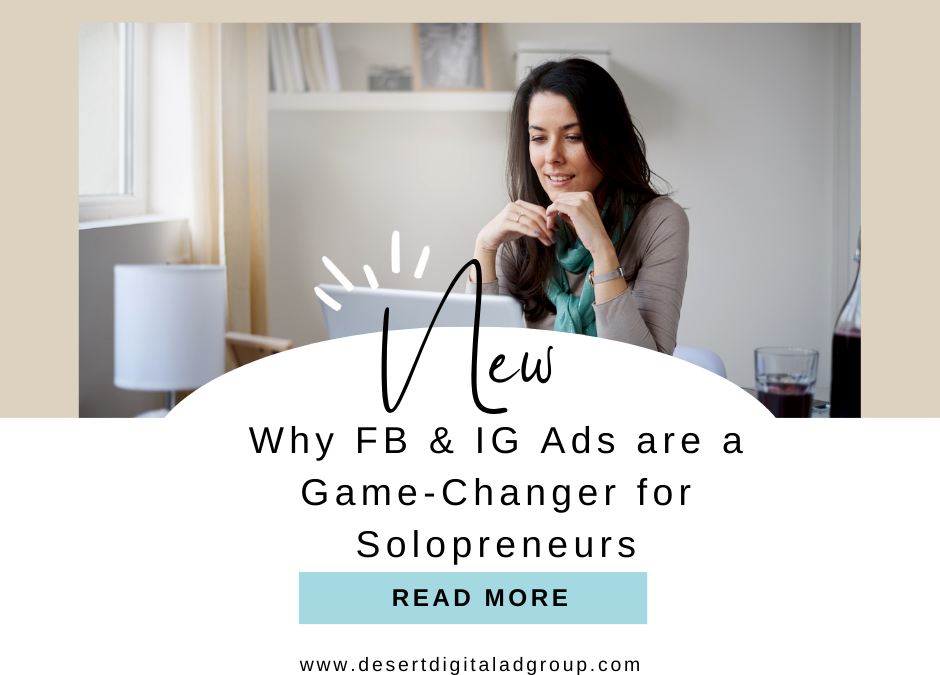
May 4, 2024 | ads, blog, promotion, social
As a solopreneur, growing your business and attracting new leads and clients can be a daunting task. With so many marketing options available, it’s hard to know where to start. But what if I told you there’s a solution that can help you reach your target audience, drive website traffic, and generate leads and clients? Enter Facebook and Instagram ads!
Why Facebook and Instagram Ads?
With over 2.9 billion monthly active users on Facebook and 1.2 billion on Instagram, these platforms offer an unparalleled opportunity to reach your target audience. But it’s not just about the numbers – it’s about the targeting capabilities and affordability that make Facebook and Instagram ads a game-changer for solopreneurs.
1. Targeting Capabilities:
Facebook and Instagram ads offer an incredibly robust targeting system, allowing you to reach people based on demographics, interests, behaviors, and even custom audiences. This means you can target people who are already interested in your niche or have shown similar characteristics to your existing customers.
2. Affordability:
Compared to traditional forms of advertising, Facebook and Instagram ads are incredibly affordable. With a minimum budget of just $1 per day, you can start seeing results without breaking the bank.
3. Visual Storytelling:
Instagram, in particular, is a visual powerhouse, allowing you to tell your brand’s story through high-quality images and videos. This is especially important for solopreneurs who want to showcase their products or services in a visually appealing way.
4. Lead Generation:
Facebook and Instagram ads offer a range of lead generation options, including lead forms, landing pages, and even direct messaging. This makes it easy to capture leads and follow up with them in a personalized way.
5. Measurable Results:
With Facebook and Instagram ads, you can track your results in real-time, seeing exactly how many people are seeing your ads, clicking on them, and converting into leads or clients. This means you can adjust your strategy on the fly to optimize your results.
6. Flexibility:
Facebook and Instagram ads offer a range of ad formats, from image and video ads to stories, reels, and even live streaming. This means you can experiment with different formats to find what works best for your business.
7. Integration with Facebook and Instagram Pages:
By running ads on Facebook and Instagram, you can drive traffic to your existing pages, increasing engagement and building a loyal community.
8. Competitive Advantage:
By leveraging Facebook and Instagram ads, you can stay ahead of the competition and reach your target audience before they do.
Facebook and Instagram ads offer an unbeatable combination of targeting capabilities, affordability, visual storytelling, lead generation, measurable results, flexibility, integration with existing pages, and competitive advantage. As a solopreneur, incorporating these ads into your marketing strategy can help you grow your business, attract new leads and clients, and achieve your goals. So what are you waiting for?
Get started today and watch your business thrive!
Set up a complimentary strategy call with me to explore the possibilities: https://www.calendly.com/carlenetb or reach out via email: mailto:hello@desertdigitaladgroup.com
Carlene helps entrepreneurs get more traffic, engagement and leads by creating the best return on ad spend campaigns. She creates campaigns with whatever marketing budget her clients can work with for their business growth & expansion. Now is the perfect time to use strategic ads for growth, leads and achieve the income you deserve.







